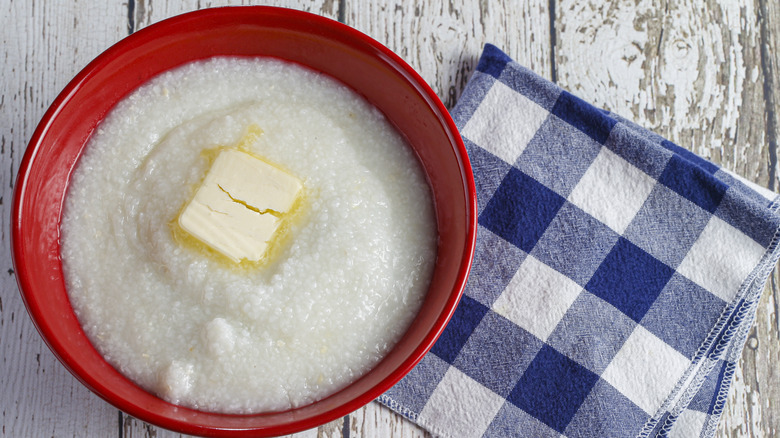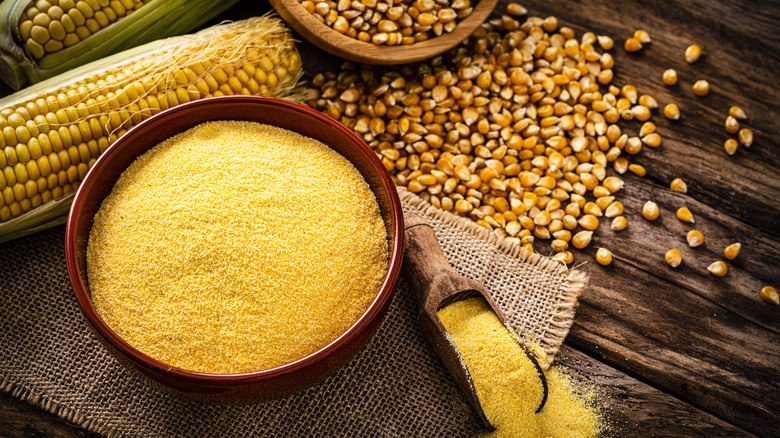Always Skim The Chaff And Hulls Out Of The Water When Soaking Grits
Corn comes in a variety of types, from yellow sweet corn to popped corn to the inflated chewy hominy in a delicious bowl of pozole. In the American South, grits are a quintessential corn dish and even an official state dish in Georgia. Southerners are passionate about their grits, voicing strong opinions on the best types of grits and their preparation. One thing most southern cooks can agree on is that stone ground or whole grain grits are tastier and creamier than instant grits. That said, whole-grain grits require a lengthier preparation time to reap the full benefits of their flavor and texture. Two integral steps in their preparation include soaking grits and removing the chaff and hulls.
Grits are simply dried corn kernels from dent or flint corn ground to varying degrees of coarseness. As a whole grain, the ground kernels in grits still have their protective, inedible sheaths known as chaff or hulls. By soaking the grits overnight, you'll effectively rid them of their hulls, which will float to the surface of your soaking water. Before you throw them into a pot to simmer, you can use a mesh strainer, tea strainer, or even a spoon to skim them off the top of the liquid. Otherwise, you'll incorporate them back into cooked grits, resulting in hard, straw-like shards that unpleasantly disrupt the creaminess.
More tips for cooking grits
The reason soaking stone ground grits is so important is because it aids in a quicker cooking time; you'll reduce the cooking time by at least 30 minutes compared to unsoaked grits. If you cook grits for too long, they won't retain as much of that rich, savory corn flavor, so quicker cooking times render more flavorful grits. If you don't have the time or forethought for an overnight soak, you can bring grits to a boil on the stove, then turn off the heat and let them sit for half an hour to an hour.
You can cook grits in the same water used to soak them, adding more water to achieve the four-to-one ratio of liquid to grits. While some Southerners advocate for cooking grits in milk or cream, water is a neutral liquid that won't upstage that wonderful corn flavor. If you want to add a layer of dairy richness, you can finish a pot of cooked grits with a pour of heavy cream and a hearty slab of salted butter. If you want to go the extra mile, parmesan and cheddar would make the ultimate cheesy grits. Grits need a lot of cooking liquid to become creamy, so you'll likely need to add more water during the cooking process. However, if you've never cooked grits before, you can start with a larger ratio of water to grits. As they absorb the water, grits become ultra-thick, requiring constant whisking to stay creamy.

